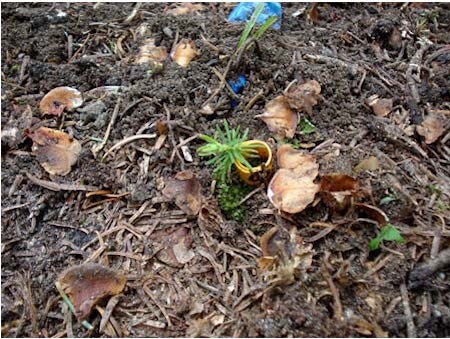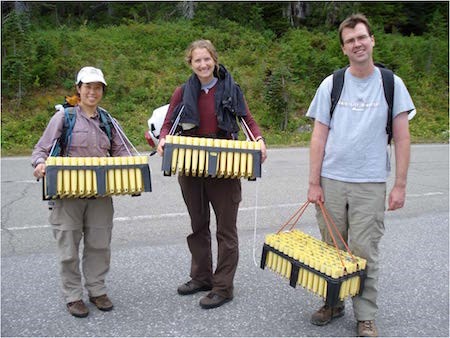Last updated: August 15, 2017
Article
Testing the Limits: Effects of Climate and Competition on Conifer Distributions at Mount Rainier
Importance
Mt. Rainier’s old growth forests are a critical natural resource. Nearly 60% of the Park is forest, providing important habitat for many plants and animals including some endangered species such as northern spotted owl. Old growth forests provide other value ecosystem services through carbon sequestration and air quality improvement. Enormous trees, such as the Grove of the Patriarchs, inspire and awe park visitors, providing a rare example of what ancient landscapes may have looked like across the Pacific Northwest. Furthermore, through their annual rings, these giants record the histories of their growth responses to past climate and can provide valuable insights into how forests may respond to changes in climate in the future.

Photo by Melissa Lacey
Status and Trend
In the Pacific Northwest of the United States, average temperatures increased by 0.8°C during the 20th century and are expected to continue rising at increasingly rapid rates (Mote & Salathé 2009). As temperatures rise, snowpack will decrease (Mote & Salathé 2009). These changes in climate are likely to affect the forests of thePark in many ways, including increasing the length of the growing season and changing the timing of flowering and seed set. Warming may also lead to changes in where trees can grow; for example, tree line is expected to shift upward in elevation as winter snowpack decreases and the growing season lengthens. However, it is unknown if all tree species will respond similarly to forecasted changes in climate, and if tree responses will differ by elevation.

Photo by Melissa Lacey
Discussion
How will climate change affect forests at Mt. Rainier? Rising temperatures could result in range shifts, or changes in the distribution of species. Indeed, scientists have already observed that many species ranges have moved upward in latitude and altitude as global temperatures have increased during the past century. However, competition with neighboring trees can also affect species distributions, which means that global warming may not always result in range shifts. My research addresses these issues by examining how climate (including temperature, rain, and snow) interacts with competition to determine the performance of three common tree species at Mount Rainier National Park (western hemlock, mountain hemlock, and Pacific silver fir). My studies investigate how seed germination and seedling establishment are affected by the removal of competitors and variation in climate. Old growth forests in the Park currently offer significant ecosystem services, including carbon sequestration and habitat for rare species, and these studies will provide information about how these important ecosystems may change in the future.
